We were lucky to catch up with Samantha Gallagher recently and have shared our conversation below.
Samantha, appreciate you joining us today. Alright, so we’d love to hear about how you got your first client or customer. What’s the story?
This wasn’t so much my first dollar, but rather my first regular client and big commission. I made a cold call to an organization about an opportunity that I thought would be a lot of fun and a good fit.
When my daughter was a toddler, we spent a lot of time hiking around in the Lake County Forest Preserves here in Lake County, Illinois. We started spending a lot of time in these beautiful sanctuaries in 2020 when a lot of things were shut down, especially for kids, and we needed to get out of the house. We were so incredibly lucky to have all of these accessible natural spaces so close to home. Some were mostly just trails, others had parks, playgrounds, snack areas, just great places to spend time outdoors as a family.
Every year in the fall, they put on their “Hike Lake County” challenge, and of course we were eager to participate. You do a handful of hikes around the various preserves, record your hikes on a printed form, and mail it in. As a reward, they send you a cool metal hiking badge or zipper pull, and each year the design is different. Avid hikers around here collect them and everything. So we did it, got our badges in the mail, and I thought “maaaaan, how fun would it be to get to design one of these? I wonder who does it? I wonder if I asked, if they’d let me do it next year?” So I called to find out.
It was at the end of the calendar year, around the holidays, and I left a message but didn’t hear back. A couple weeks after New Year’s, I decided to be persistent and call again. I’m honestly not a good salesperson at all, and not usually the type to hype myself like that. But once in a while I get a feeling that something is going to be the perfect fit, so I chase it. Anyway, I got a call back. Then an email. They wanted me to bring in my portfolio to talk about a project. I couldn’t have been more excited!
…But the project wasn’t the hiking badge, or even just one thing. The project was two sets of drawings: 12 native plants and 12 native fishes. Wow. I thought they might want one single drawing, or the one hiking badge. 24 unique pieces of art! At least I had some experience drawing and painting plants. But when we set up the interview, I thought, surely, they’d want me to draw insects. My entire website was insects! Here was this amazing opportunity to work with my dream organization, and I was sure I was going to mess it up since I had never drawn a fish in my life. I figured I had probably blown this opportunity before it even began. I went from ecstatic to extremely intimidated. Apparently they had confidence in me, and all I could do was give them my best. I guess drawing insect exoskeletons translated well enough to fish, though, because they were very enthusiastic about the drawings, and have commissioned me to create a lot more work since then.
I am so glad that I took the chance and made that call to ask about that hiking badge!
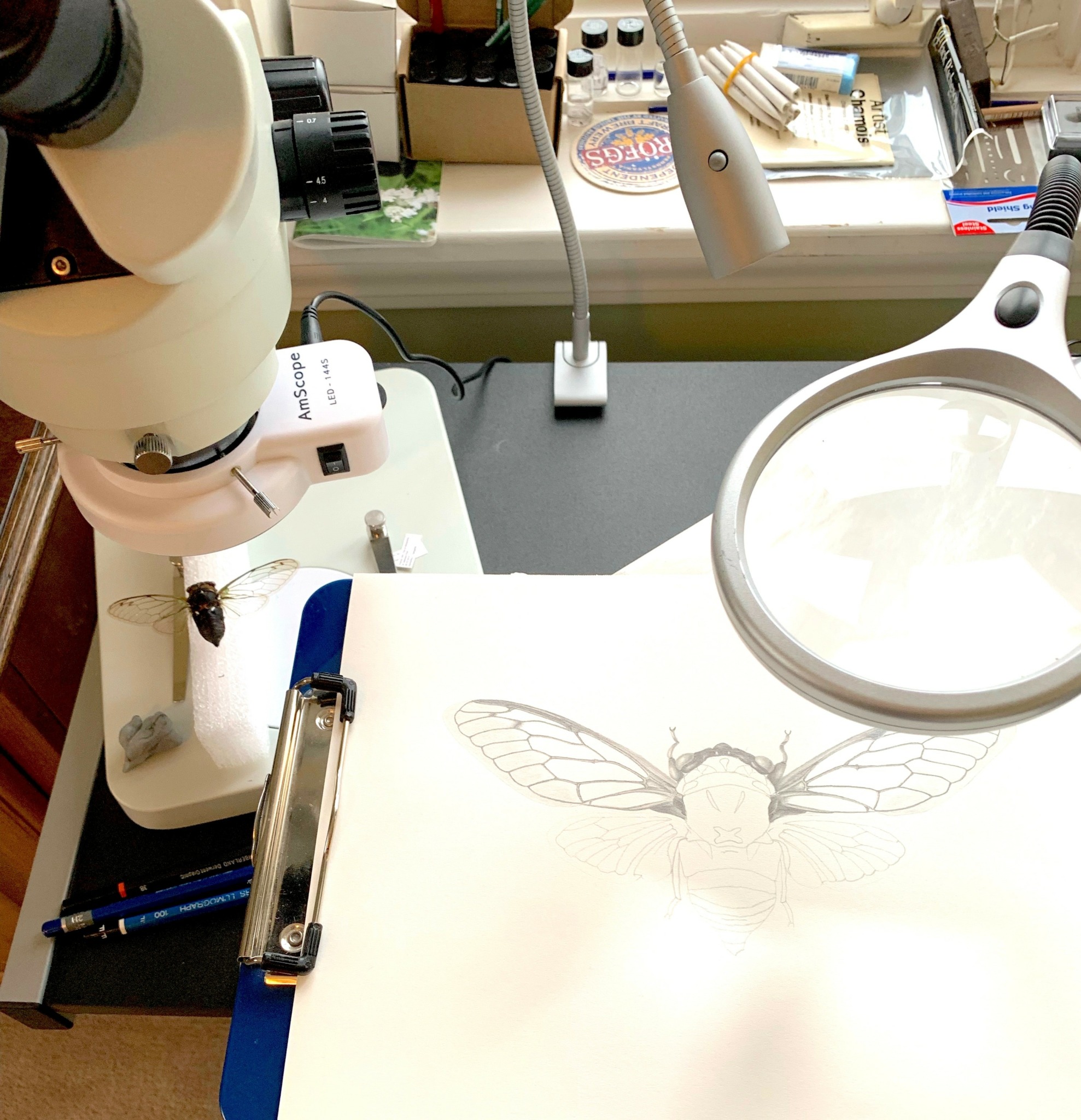
Samantha, love having you share your insights with us. Before we ask you more questions, maybe you can take a moment to introduce yourself to our readers who might have missed our earlier conversations?
While I’ve done art in some form for most of my life, I first got into my current craft after taking a scientific illustration class as part of the coursework for a master’s degree in Entomology. I had a background in fine art and graphic design, but that class helped me see and draw things in ways that I hadn’t learned in traditional art school.
After a 15 year career in 3D graphics, I was pursuing a degree in Entomology hoping to launch a new career in bee taxonomy and identification. Studying bee populations is important to determine what species already exist in an area and determine whether numbers are increasing or decreasing. Bee identification requires the use of a microscope to look at pinned specimens, and you’re often looking for super fine, tiny details to distinguish between species- there aren’t a whole lot of people who do it. Since this kind of work involves paying very close attention to tiny details, scientific illustration is a natural fit for someone like me who also loves to draw, since it involves illustrating things as accurately as possible.
With my illustrations, I strive for to make things as precise and accurate as I can, while also aesthetically pleasing. To properly compose an illustration, I usually spend at least as much time researching a subject as I do actually drawing it. Preferably I will go see the subject in the wild (in situ) and get my own photos. The next best thing with insects or plants is to have a specimen in front of me, maybe even under a microscope, while I’m drawing. I can go back and forth looking at textures, setae, and distinguishing characters, and compare the color of what I’m drawing with the actual insect when applicable (the colors of many insects fade when they’re deceased or if the specimen is old). If I can’t obtain my own specimen, I’ll try to access one at a museum or in a collection and take photos of it there. I try to find videos of the subject that I’m illustrating, to study movement and behavior. INaturalist is a great place to find lots of photos if I’m having trouble seeing a certain element in photos that I’ve taken myself.
One of my favorite projects that I ever got to work on was commissioned by the Lake County Forest Preserves as part of a Spring and Summer campaign featuring the 17-year cicada Brood XIII emergence in 2024. I got to do 12 drawings of cicadas, which were included in a magazine feature article, a museum exhibit, and other fun things like the label for a beer collaboration with a local microbrewery.
Another exciting project that I got to check off my bucket list last year was illustrating a book. A friend and author, Eric Eaton, offered me the position of Illustrator for “BugWatching: The Art, Joy, and Importance of Observing Insects” and I was happy to accept- but also very intimidated, as usual. Eric is extremely knowledgeable about insect behavior and anatomy of many, many different kinds of insects, and working with him as I created the drawings improved my work dramatically. I am so grateful for the opportunity and skills that he helped me to gain.
I’m currently working on both a bee identification project as an independent contractor in addition to running my illustration business. I feel like the luckiest girl in the world to get to do both of those jobs!
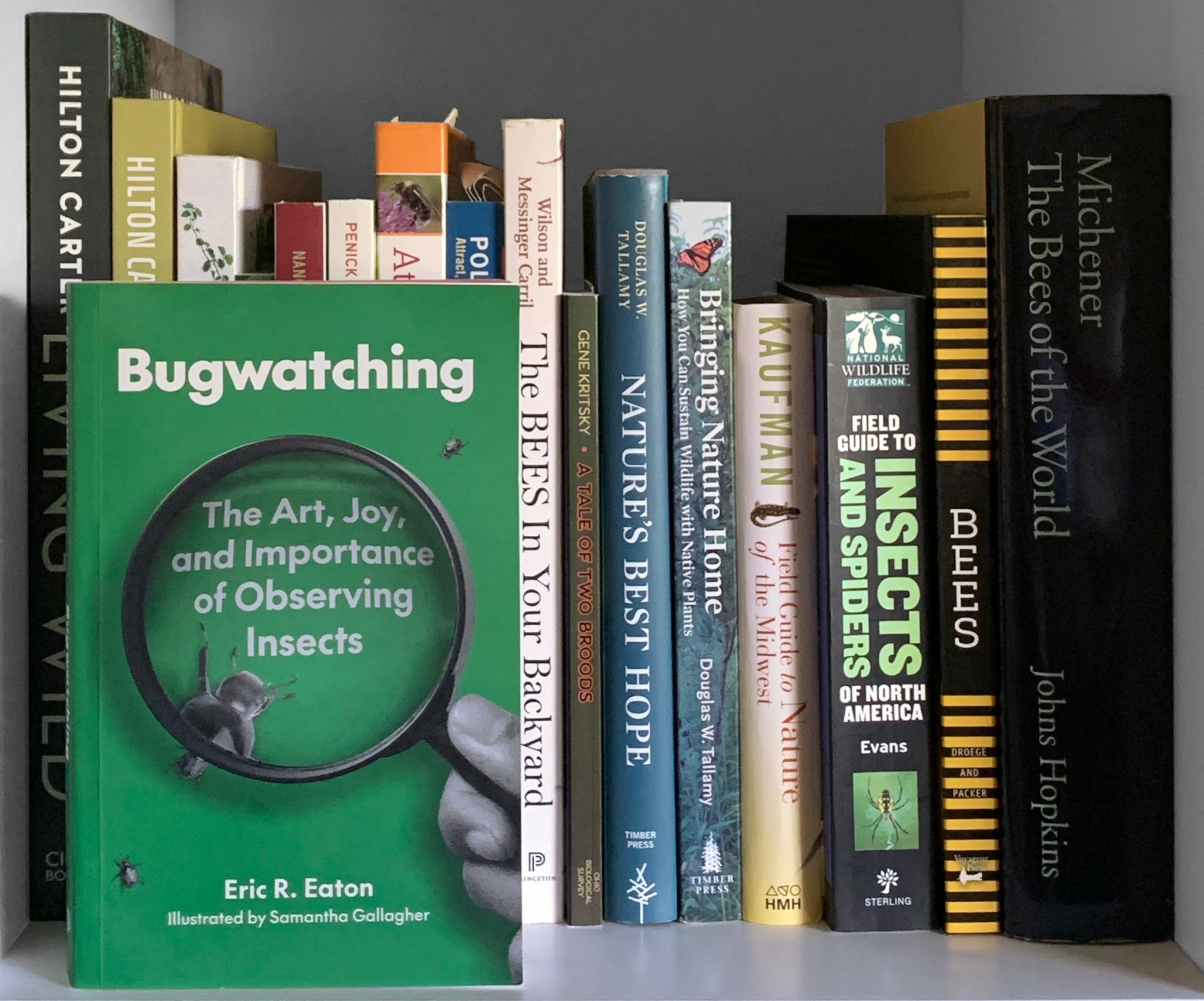
What else should we know about how you took your side hustle and scaled it up into what it is today?
Art didn’t intentionally start out as a “side hustle,” but was always part of my identity, and just something I felt that I wanted and needed to do for relaxation and enjoyment when I wasn’t at work. I did it as a hobby, for fun, and friends kept telling me “this is great, you could sell this.” I thought friends being friends, they were just being nice, but eventually those comments got to me and I wondered if I really could sell my art. I sure would rather be doing that than sitting at a desk rendering buildings. I did struggle with the idea of parting with original paintings since at that time, I was doing art for me- because I enjoyed both the process and the subject matter I chose. If I was going to sell art, I needed to consider what other people might like, too.
I still struggle with that, since now insects are my main subject matter. My mom has said flatly, “I don’t know anyone who would hang pictures of bugs in their house” (though I could certainly introduce her to some). So while it’s fun for me to find obscure and interesting insects to draw, I have to include my fair share of charismatic ones like monarchs, rosy maple moths, bumble bees on pretty flowers, etc.
The first time I started trying to sell art, in 2007, I was still working full time. That was helpful because I had a regular paycheck, and everyone always tells me for the first year or two, it’s really hard to make profits in a business. I didn’t have time to do art full time and work a full time job too, but I could slowly invest in things like a nice printer, supplies to make prints (good paper, bags, backing boards), and things I would need for an art show like a canopy, tables, display panels. But it took me years to finally build what I felt was a decent looking booth for shows.
Just about when I started having customers who would regularly seek me out at shows, and got that nice looking booth, I quit. It was so much work, and I wasn’t always enjoying it. I met a lot of really sweet and friendly artists who almost became like distant family- we would see each other at the same shows year after year, and I looked forward to seeing them each time, like a little reunion. But setting up and then taking down a booth for an outdoor show- it’s a lot of work. And when you go to some shows, and there are a few other artists there who make that experience extremely unpleasant, it doesn’t make you anxious to keep doing it. So for other artists who do outdoor shows- don’t be that guy who has the biggest vehicle with the biggest trailer attached, and has to get in first to unload and be the first to pack up, and blocks everyone else’s way doing so. It’s so much work, the least we can do is be nice to each other. We’re all there with the same goal.
For about 10 years after that, I didn’t try to sell much art. But once I got into scientific illustration, I decided to try again. I knew it would take time to build up a business, and luckily I wasn’t in any hurry. I was a stay at home mom, and once again I had been drawing for fun… mostly in the wee hours of the night, when my daughter was sleeping. When she started pre-school for a few hours a couple times a week, I knew I’d have a little more time to invest in starting a business again. So I did. I hoped by the time she started school full time the following year, I would at least have some idea of where my business was going, since I would have a lot more time to myself when I could work. That was pretty much what happened- I got my first client and big commission, and that kept me busy for at least a few months. When I wasn’t working on commissions, I was drawing things that I wanted to draw, adding them to my portfolio, and also started making other merch with my art like stickers and ornaments. It’s still slow-going since I generally don’t get to work on my business 9-5 like a “regular job,” but I work on it when I can and am enjoying the balance I have now between bee identification, commissions, and doing random art that I want to do- and even the occasional outdoor art shows as well. Doing smaller shows has a much more chill vibe than the big shows I had been doing before, and I’m already meeting other artists who I keep in touch with now that social media is a thing.
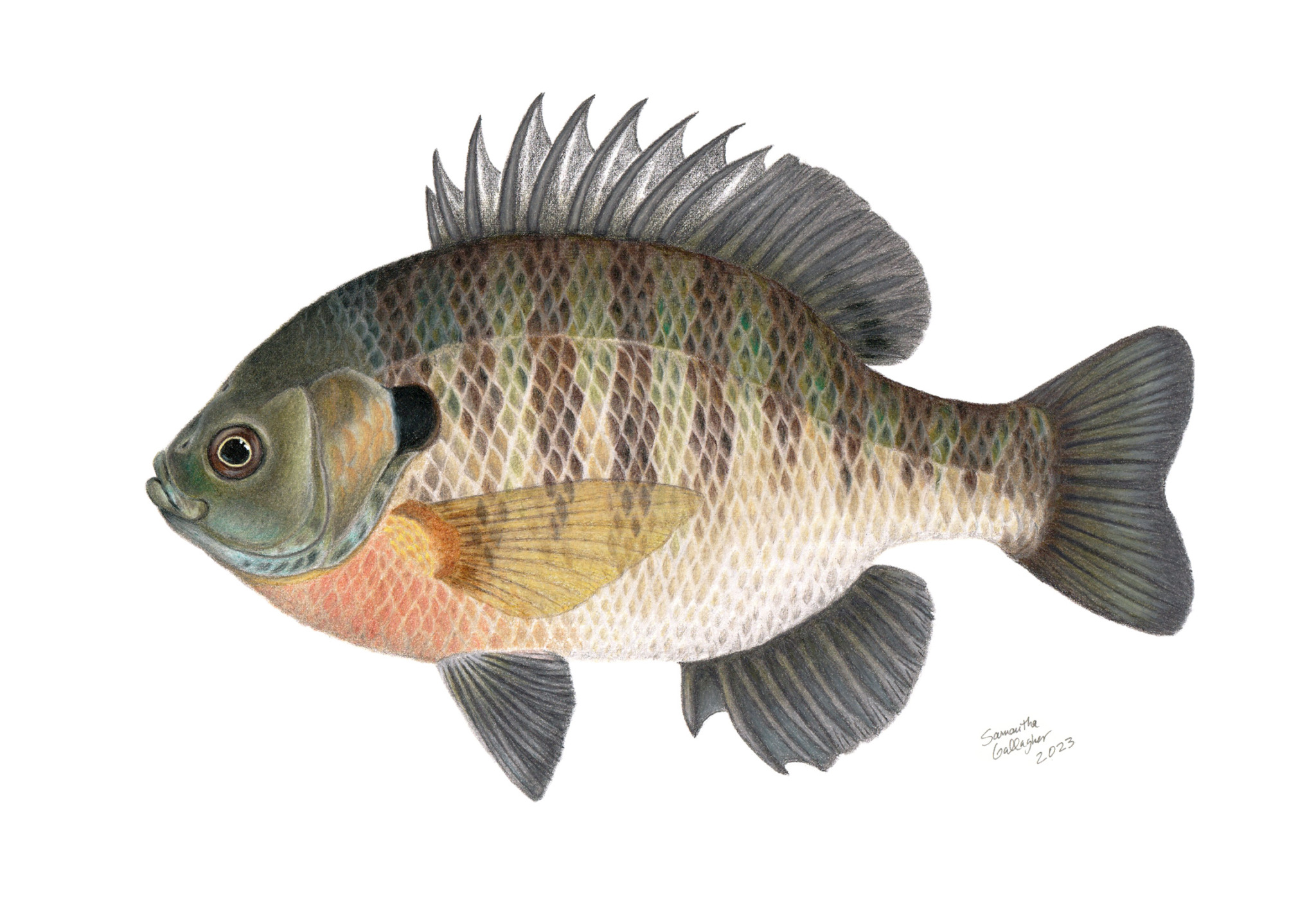
Can you tell us about a time you’ve had to pivot?
I’ve had to pivot three times for these reasons:
1. Change of interests (more accurately, allowing myself to pursue the interests I had since I was a kid but didn’t pursue because they “wouldn’t make money”)
2. Baby
3. Change of Location
So I’ve had to pivot a few times. I think if I had known how common it is for a career path to be janky and twisted and forked and NOT a straight line, it may have helped whenever I struggled with self-doubt and feeling too scatterbrained to handle a business.
An artistic pivot I made was switching from acrylic painting to colored pencils. There are a few reasons why I made that switch, but having a baby was a big driving factor and sort of sealed the deal. I had used colored pencils here and there for a long time, but the first medium I really got comfortable with was acrylic paints. I learned a wet layering/blending technique with acrylics in a college class, and I loved that I could blend the colors so seamlessly. When I first started out, I was painting large tropical flowers on canvases, usually around 16”x20” or larger. This blending technique seemed perfect for that. Eventually I wanted to work smaller, or for smaller chunks of time, and picked up my colored pencils for when I wanted something I could work on for just a little while here and there. Some years later, I was working on a project with acrylic paints and found myself endlessly frustrated with them. I hated that the color looked so different from wet to dry. I hated when I would mix a specific color… and then run out of it, and have to try and match it again. I hated that I needed the paints to stay wet to blend them very well. By this time I had a toddler at home with me, and acrylic paints in the way that I work didn’t handle frequent interruptions very forgivingly. It was hard to put the paints down and return, even if just a few minutes later, and pick right up where I left off.
This was when I made the decision to work with colored pencils (and now pastels). It’s a medium that doesn’t care how many times or how often you stop and start again. It’s a great medium for when you have a baby or young child at home. I also work smaller than I used to, which is convenient for a lot of reasons- framed small pieces don’t weigh as much, scanning my work is much easier, printing things true to their original size is simple, too.
Sometimes pivoting isn’t that simple or straightforward. I also pivoted from a job doing 3D graphics to Entomology. That involved working full time while also doing various volunteer jobs learning about insects, first just for fun, then making the decision that that was the kind of work I would rather be doing. I figured I probably needed to pursue a formal education, since my background was in computer graphics and who was going to hire me to do anything insect related? Other than enthusiasm, what did I have to offer? But I was also already in my 30s, and getting a new degree and starting over felt not only intimidating, but like it was too late (spoiler alert: It wasn’t). While at a week long bee identification workshop, I lamented to one of the instructors that I wouldn’t have my master’s degree until I was 40. Her response was, “but you’re going to be 40 anyway?” That was one of the best pieces of advice I ever got.
So while continuing to work full time, I went back to school and started taking basic science classes and re-taking a lot of math, to make up for what I had either forgotten since college or the science I never had as part of an art curriculum. Eventually I applied to graduate school, got in, and obtained my Masters degree in Entomology. Do I need that degree to do what I am doing now? Probably not, to be honest. But I wanted the degree to give myself credibility, since I suffer quite a bit from Imposter Syndrome (as many artists do). I’ve noticed at art shows when I’m conversing with people, they will ask about my education, and seem a lot more impressed when I tell them that I have an Entomology degree. Some seem surprised, but others “in the know” aren’t surprised since they can see the level of detail that I strive to include in my work. In addition, having the degree has given me a little more confidence when conversing with professors, authors, or other scientific illustrators.
It’s never too late to change courses and rethink what you want to be doing. Do what makes you happiest.
Contact Info:
- Website: https://www.samanthagallagherillustration.com/
- Instagram: @sammybeezz
- Facebook: https://www.facebook.com/SamanthaGallagherIllustration
- Linkedin: https://www.linkedin.com/in/samantha-gallagher-0b4a6ab1/
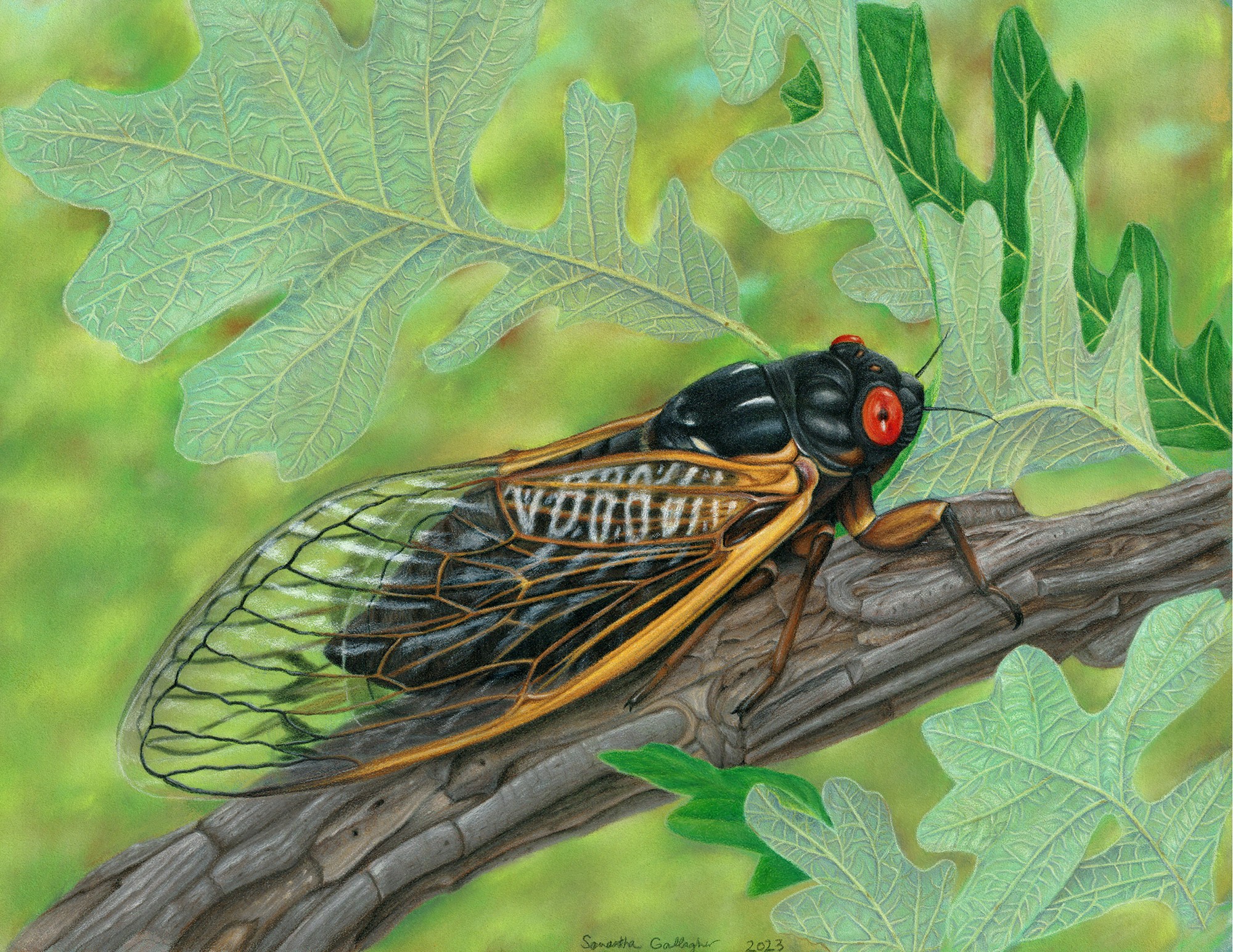
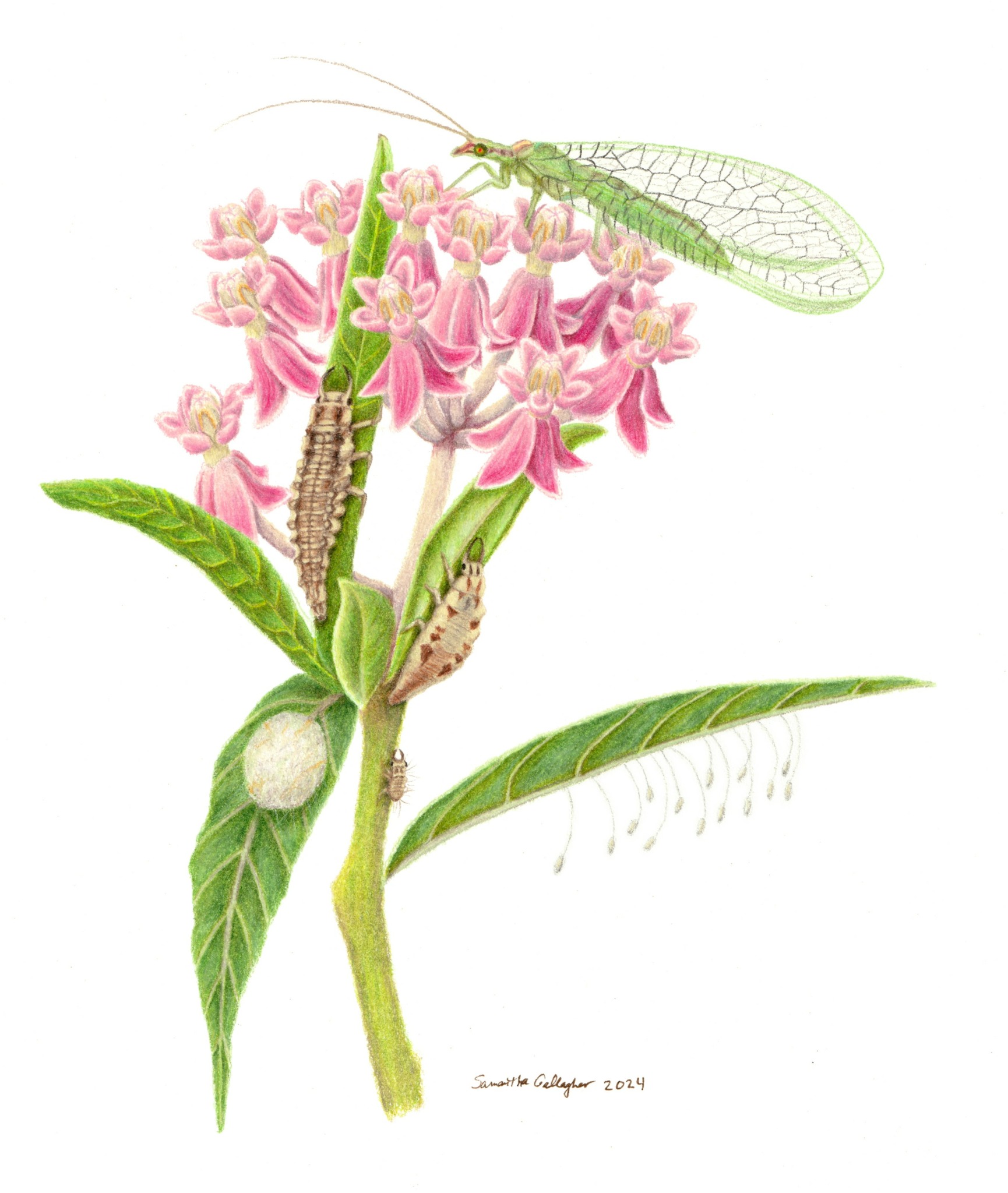

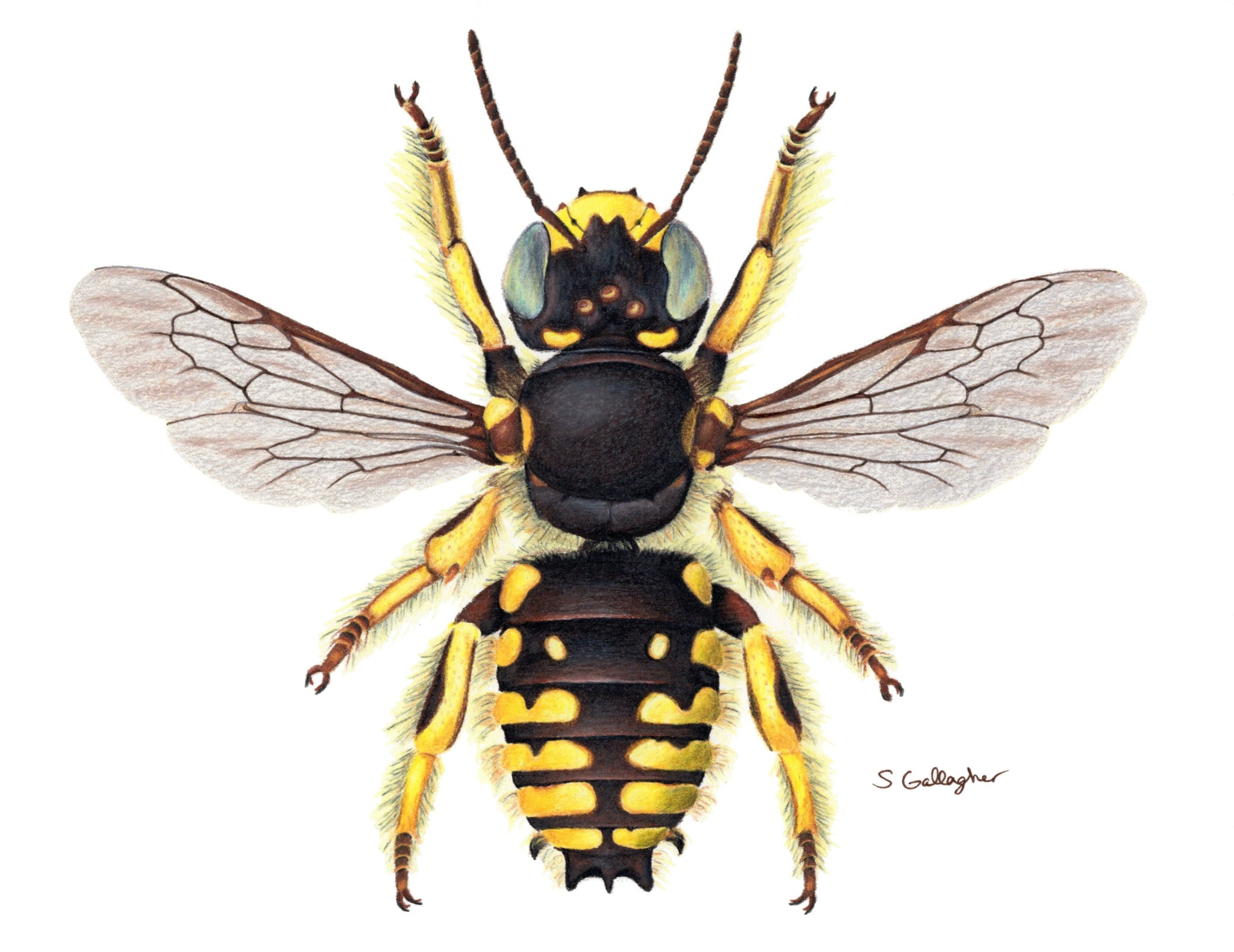
Image Credits
These are all of my own images. The Cicada and Bluegill (fish) were commissioned by the Lake County Forest Preserves, so they also have rights to these images- please note that.


